
Landscape paintings
Filter
204 followers !
72 followers !
159 followers !
84 followers !
55 followers !
26 followers !
BUY A LANDSCAPE PAINTING CARRÉ D'ARTISTES
Explore our collection of landscape paintings for sale
Landscape painting is a depiction of natural scenery, sometimes incorporating symbolic or narrative elements. This art form, which originated in the Middle Ages, has evolved greatly over time. Discover how the genre has transformed from the Renaissance through the 20th century, and learn about the painters who left their mark on this enduring style.
Found in Western medieval miniatures, Roman art, Indian paintings, and Persian miniatures, landscape painting employs various techniques like acrylic and gouache. Explore how you can incorporate these works into your home decor, discover the best ways to display them, and see why they make an excellent addition to your space.
Choose from our selection of landscape paintings for sale, available in our galleries or on our website.
Found in Western medieval miniatures, Roman art, Indian paintings, and Persian miniatures, landscape painting employs various techniques like acrylic and gouache. Explore how you can incorporate these works into your home decor, discover the best ways to display them, and see why they make an excellent addition to your space.
Choose from our selection of landscape paintings for sale, available in our galleries or on our website.
Read More
THE EVOLUTION OF LANDSCAPE PAINTING
2.png)
Eras and masters of landscape paintings
The development of landscape painting often involved a balance between capturing the actual scenery (in situ) and the artist’s interpretation (in visu). This blend has evolved significantly from medieval depictions of organized spaces and everyday scenes, such as those in The Very Rich Hours of the Duke of Berry
The Renaissance marked a shift, as landscapes, often with religious or mythological elements, gained prominence.
By the 17th century, despite lacking academic recognition, the genre became prominent in the works of artists like Rubens and Nicolas Poussin.
In the 19th century, the Romantic period brought a focus on interior landscapes and exotic themes. The Impressionist movement in the late 19th century, led by Claude Monet, transformed the genre by emphasizing light effects and capturing natural beauty. Vincent van Gogh's Starry Night, painted in 1888 in Arles, vividly portrays his emotional state through its dynamic and colorful depiction of the night sky.
In the 20th century, landscape art continued to evolve, with movements like Land Art pushing the boundaries of traditional landscape painting. Artists like Edward Hopper captured everyday scenes, while William Turner and Caspar David Friedrich used landscapes to convey deep emotions. Nicolas de Staël introduced a modern approach to landscapes, blending realism with abstraction, inspired by the views of Sicily.
HOW TO INTEGRATE LANDSCAPE ART INTO YOUR HOME
You may wonder how to integrate landscape art paintingsinto your home decor.
While landscape paintings might seem traditional, they blend beautifully into modern and contemporary styles. They can add warmth, inspire the imagination, and evoke a sense of freedom in any space.
Original landscape paintings can be featured in various rooms:
- In the living room, place a horizontal landscape painting above a sofa.
- In the dining room, create a composition with three or more paintings.
- In the bedroom, position a landscape painting above or across from the bed. Opt for tranquil colors like shades of green and blue to promote a calming effect.
Tips for Displaying Landscape Paintings
Hang your artwork at eye level, approximately 60 inches from the floor, and about 4 to 6 inches above furniture. You can also enhance visibility by placing the paintings on shelves or incorporating them into furniture arrangements like desks or mantels.
Pay attention to lighting, as it can alter the colors and overall impact of the piece.
THE LANDSCAPE AS AN ARTISTIC FOCUS
Art critics credit Belgian painter Joachim Patinier as the pioneer of the landscape genre. The contemporary artist Albrecht Dürer even described himself as a "good painter of landscapes," recognizing his early contributions with his watercolor and gouache works.
During the Renaissance, landscapes often carried urban themes, with examples like the Florence planning project showcasing ideal cityscapes.
Flemish painters also began depicting interior views framed through windows, expanding to full canvases in pieces like Giorgione’s The Storm.
What is landscape painting today?
Today, contemporary landscape artwork spans from fully abstract landscapes to realistic representations. Contemporary artists have redefined traditional landscapes, experimenting with new techniques.
Landscape art remains popular for wall decor, bringing nature’s beauty and tranquility indoors. Paintings of landscapes can evoke memories of travel, peaceful moments in nature, or the simple joy of a scenic view. Vibrant colors and detailed compositions create striking visual effects that enliven any space.
Diverse Techniques in Landscape Painting
The techniques used for landscape paintings are diverse and have evolved over time. Artists may depict nature as it is, or use landscapes as a backdrop for life scenes.
- Acrylic is a versatile technique that dries quickly, enabling artists to work swiftly.
- Watercolor blends pigments with water, creating a soft and romantic atmosphere, perfect for watercolor landscape paintings.
- Gouache offers an opaque finish and is used for more solid, detailed representations.
- Oil painting is characterized by its slow drying process, resulting in rich textures and depth in landscape oil paintings.
- Other techniques like dripping and lacquer add unique visual effects and protective qualities to contemporary pieces.
Landscape artists at Carré d'artistes
Inspired by nature’s beauty, our artists create original landscape paintings featuring mountains, forests, rivers, fields, seas, cities, and more. Each artist brings a unique style and technique, from abstract landscape paintings to impressionistic and realistic works.
One such artist, Alain Héraud , draws inspiration from the sea, creating light-filled paintings that evoke peace and tranquility. His works transport viewers to imagined cities and serene turquoise waters.
Buying a landscape painting is a thoughtful decision. If you have any questions about our paintings of landscapes for sale, our customer service is available by phone at +33 4 86 31 85 33 or via videoconference.
PAINTINGS BY STYLE



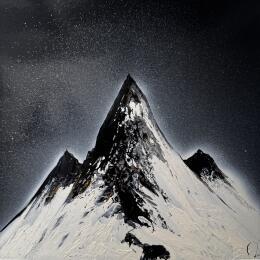









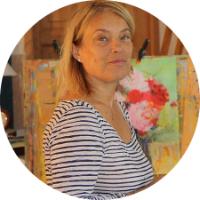



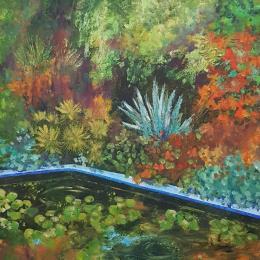













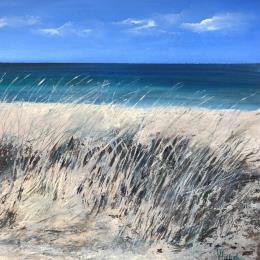









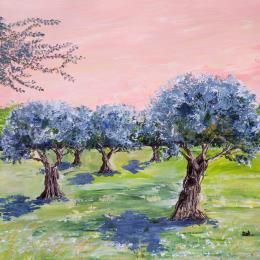

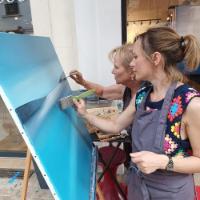




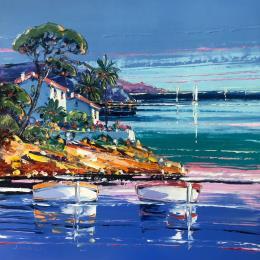













2.jpg)

